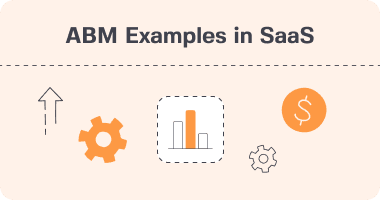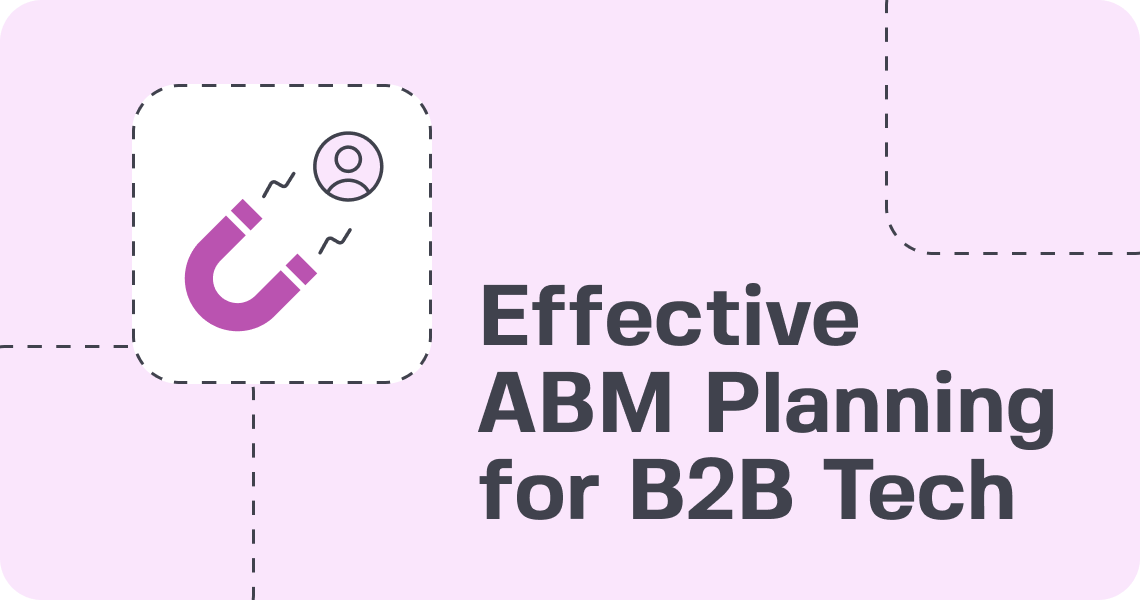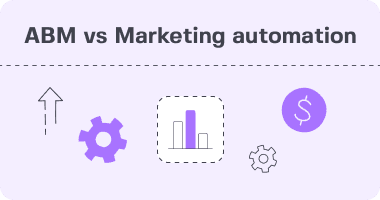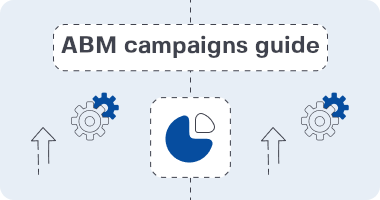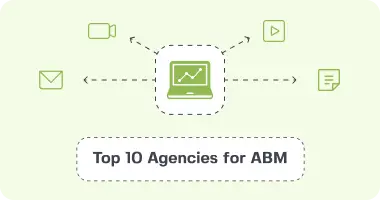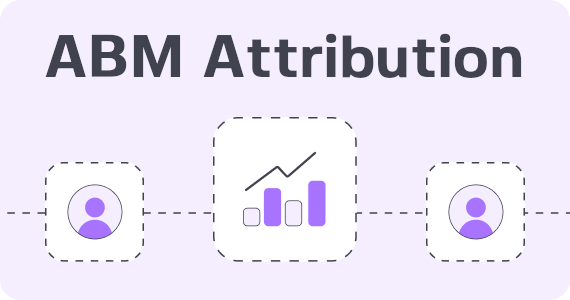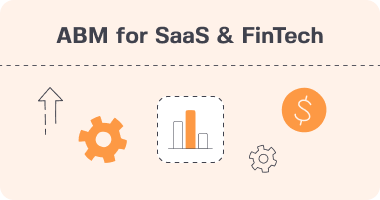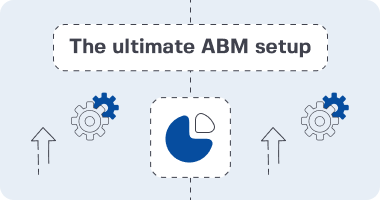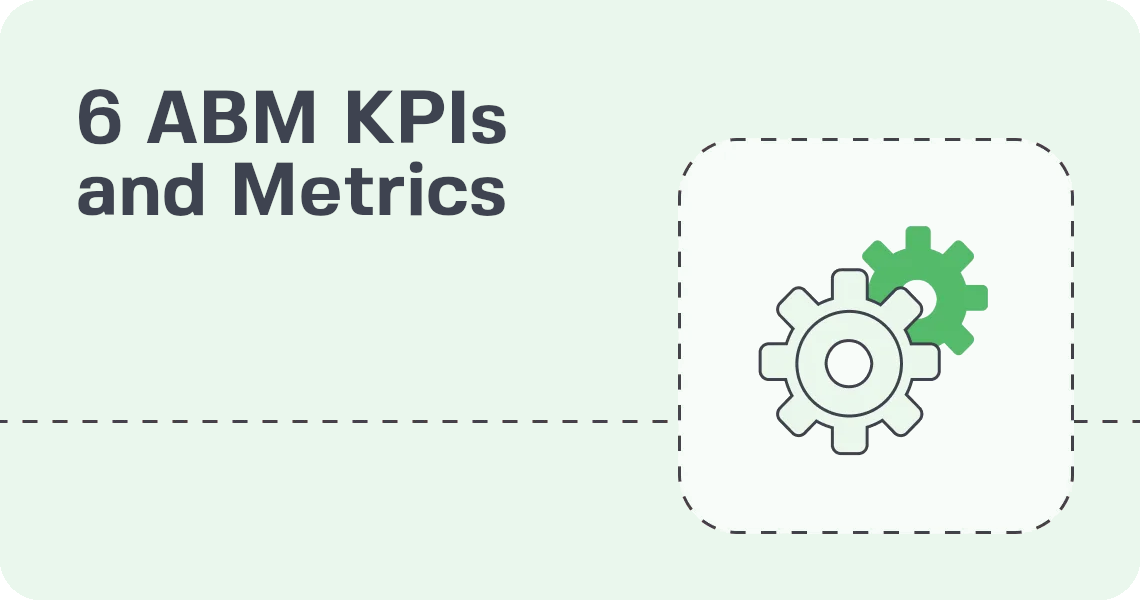Account-based marketing (ABM) tactics are all about building personalized experiences that engage key accounts rather than a larger audience. ABM fosters deeper connections by customizing marketing strategies to address the individual needs of each account. This new approach leads to significantly more effective outcomes for brands.
This strategy typically leverages data-driven insights, alignment between sales and marketing teams, and personalized content to reach and influence key decision-makers. Techniques such as focused advertising, tailored email outreach, and dedicated account events create a precise and effective methodology.
When implemented correctly and tactically, ABM allows businesses to further streamline resources, decrease valuable sales cycles, and increase ROI. In this guide, you’ll find actionable steps and practical examples to refine your ABM efforts and achieve measurable success in connecting with high-value accounts.
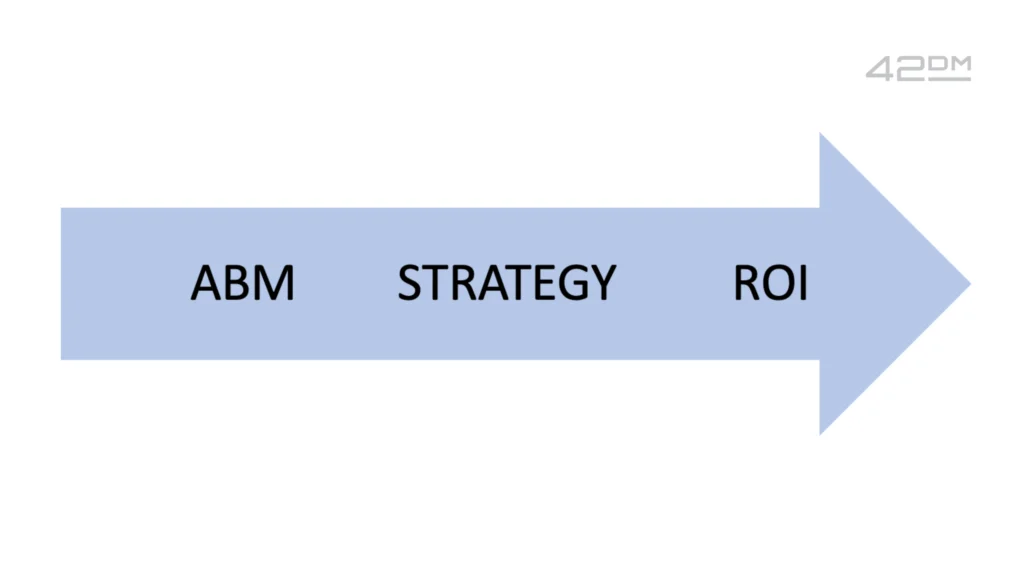
Why ABM Is the Right Strategy for SaaS in a Recession
During periods of economic downturn, SaaS companies of every size and niche experience sharper scrutiny on spending and demands for demonstrable results. Account-based marketing (ABM) provides a targeted, resourceful strategy that just so happens to tie in seamlessly with these hurdles. By focusing on fewer but more valuable accounts, ABM makes sure that each resource is focused on delivering impactful results.
Focus Resources on High-Value Accounts
By implementing ABM, SaaS companies can prioritize the accounts that have the highest potential for expansion or need the most attention for retention.
This is particularly important when resources are stretched thin. Rather than thinly spreading digital marketing campaigns across an entire wide net, ABM focuses on quality over quantity.
For example, if your SaaS product serves mid-sized healthcare providers, ABM supports identifying key players in that industry and tailoring messaging to their pain points, such as compliance or operational efficiency.
This approach not only increases engagement potential, but enhances the chances of success by responding directly to what they require.
Ensure Maximum ROI
The data-driven aspects of ABM allow teams to precisely calculate success. Measure meaningful KPIs like account engagement level, deal velocity, and CLV.
In doing so, you will begin to understand why ABM is the clear path to fueling revenue growth. For a SaaS company focusing on enterprise-level clients, ABM can cut down the time-consuming and costly sales cycle to the extreme.
Through aligning marketing and sales teams, they can eliminate duplicative work and double down only on accounts most likely to convert.
This resulting integration leads to higher overall ROI while allowing SaaS marketing agencies to develop deeper relationships with long-term clients.
5 Recession-Proof ABM Tactics for SaaS
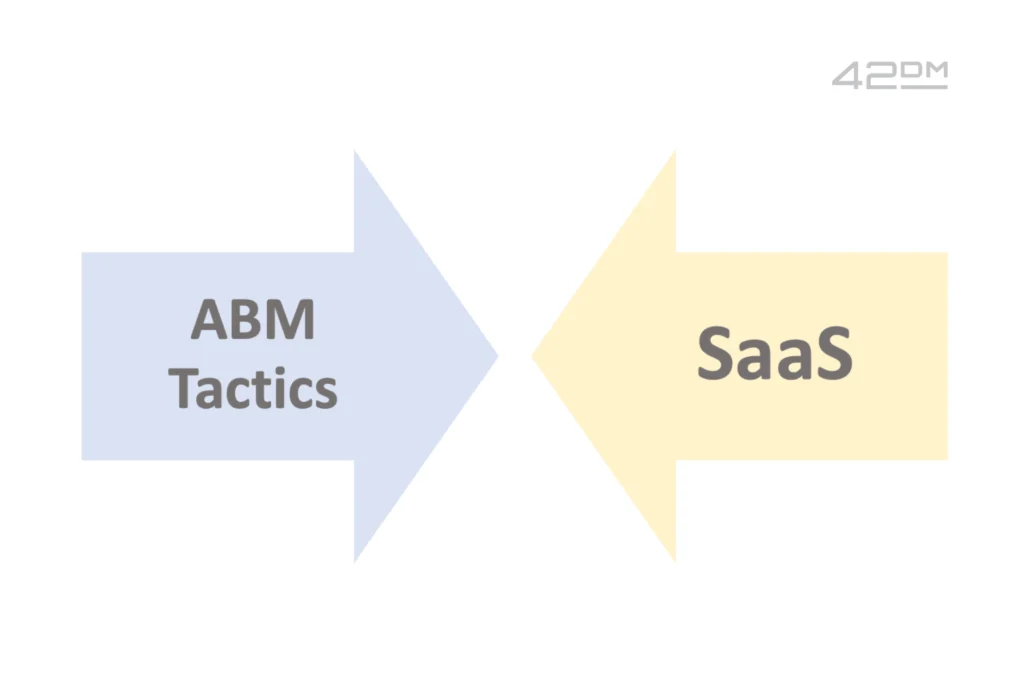
As the economic landscape puts pressure on spend, account-based marketing (ABM) emerges as a key differentiator for SaaS organizations. By prioritizing precision and meaningful engagement, these tactics guarantee the most efficient use of resources all while driving sustainable growth.
Here, we take a closer look at five recession-proof ABM approaches customized for SaaS companies.
1. Prioritize High-Value Accounts with the Potential for Long-Term Growth
This means identifying the accounts with the most growth potential and concentrating all efforts on them. Firmographics, intent data, and in-depth customer analysis can all help you hone in on organizations that match the ideal profile for your solution.
For example, targeting accounts already engaging with your content or showing purchase intent allows you to allocate resources to prospects most likely to convert. Especially in uncertain times, these accounts are worth their weight in gold as they typically drive better retention rates.
2. Leverage Data and Insights to Personalize Campaigns
Without data-driven personalization, you risk letting your message get lost in the noise. By leveraging first-party data, behavioral signals, and buyer intent, you can design personalized campaigns to drive each account through their unique journey.
So, for instance, a SaaS company might feature case studies that prove their ROI in each specific industry vertical. They can further personalize demo invitations based on a prospect’s most recent activities.
Personalization builds a level of trust that’ll prove imperative when each dollar goes under the microscope.
3. Maximize the Use of Existing Relationships and Customer Advocacy
Account-based marketing efforts that focus on nurturing strong relationships with current customers can help maintain growth. Additional tactics such as upselling into premium plans or cross-selling complementary features help to reinforce and bolster the revenue stream.
Showcasing your best customers’ success stories as either testimonials or case studies helps to build credibility and trust with future prospects. Client referral programs can do wonders for converting super happy clients into evangelists that bring in new business.
4. Double Down on Content Marketing and Thought Leadership
Content marketing helps build that trust by being upfront about the challenges facing your industry and customers. By publishing this content—whether it’s blogs, industry reports, webinars, etc—you help to establish your SaaS company as a reliable resource.
Even when there are cuts to budgets, thought leadership marketing helps ensure that your brand stays top of mind and in front of decision makers.
5. Invest in Automation and AI to Scale Your ABM Efforts Efficiently
With automation and AI, ABM processes become faster and cheaper while still being effective. Lead scoring AI-powered tech enhances your lead scoring process, predicting what customers are interested in and personalizing outreach.
For instance, your automated workflows can deliver personalized follow-up in real time so you never let a hot opportunity get away. These technologies are key to scaling these efforts without further stretching resources.
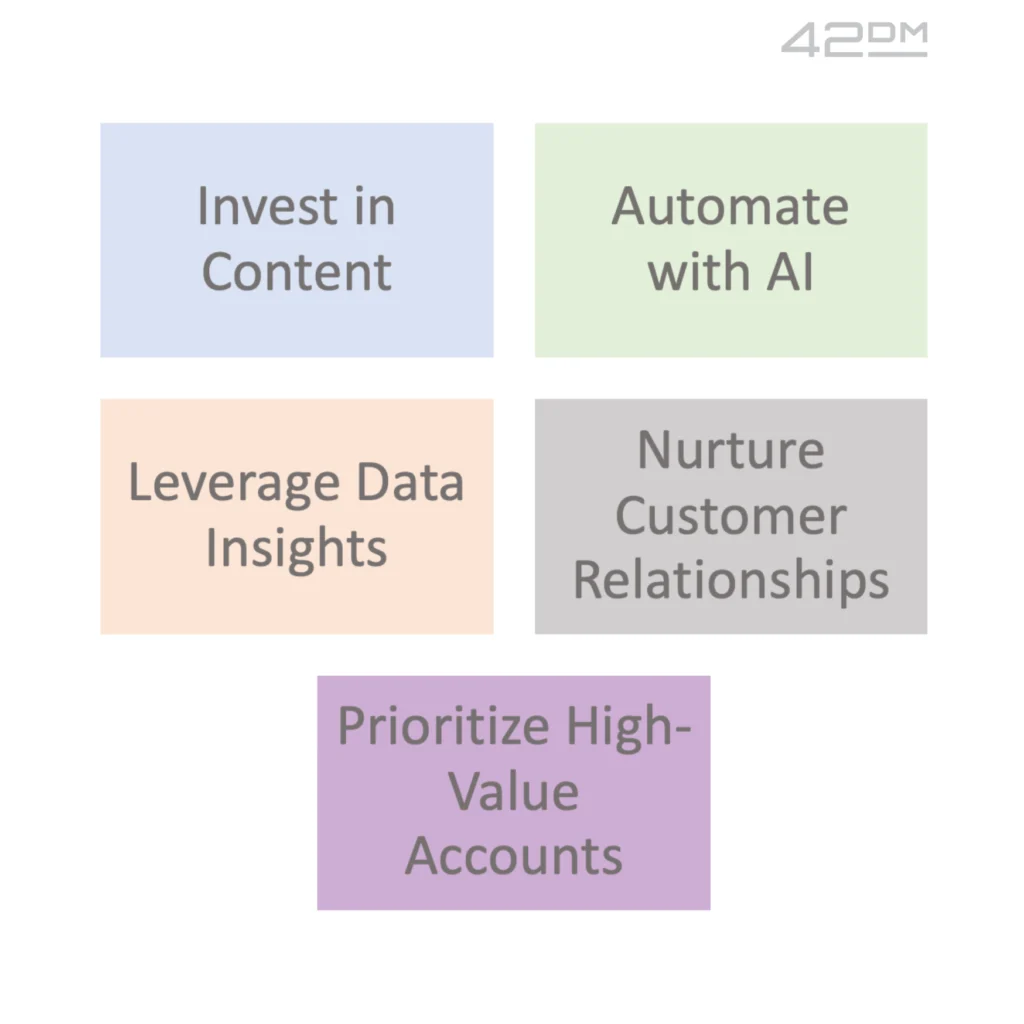
Measuring ABM Success: Key Metrics
Evaluating the success of Account-Based Marketing (ABM) initiatives requires a clear understanding of ABM-specific metrics. By monitoring these essential account based marketing KPIs, you’ll be able to adjust tactics, drive data-based decisions, and stay focused on overarching business goals.
The metrics below will get you started on finding actionable takeaways on how to gauge ABM performance.
Track Account Engagement
Measuring engagement with target accounts is a necessary first step in figuring out how well your efforts are hitting the mark. Engagement scores give you an easy way to gauge interest. They consolidate contact interactions like email replies, web page views, and event attendance.
For instance, if a target account is downloading resources multiple times or booking meetings, it indicates stronger engagement. Ongoing monitoring is critical, as it allows you to adjust your messaging or channels based on real-time data, ensuring relevance and fostering stronger relationships over time.
Monitor Pipeline Velocity
Pipeline velocity is the rate at which opportunities progress through the marketing funnel automation. This metric highlights the efficiency of your sales process, revealing whether ABM efforts accelerate conversions.
For example, having shorter negotiation durations with high-value accounts might be a sign that you’re targeting successfully. Analytical tools can help identify where the delays are, like proposals that have stalled, so teams can zero in on bottlenecks and get the process moving again.
Assess Deal Size and Value
By measuring the average deal size from the target accounts, you can get a measure of the revenue impact that ABM has made. In general, larger deal sizes are indicative of well-targeted and well-planned campaigns.
Regularly checking in on these numbers to inform your future approach, such as prioritizing accounts with more significant potential revenue, will help hold your ABM strategy accountable.
Calculate Return on Investment (ROI)
ROI is a traditional metric that looks at the financial return of ABM campaigns. Concrete metrics, like cost-per-lead and revenue produced, ensure you justify your spend while optimizing how and where to allocate your resources.
For instance, if a campaign costs $50,000 to run but brings in $150,000 in revenue, your ROI would show that campaign is effective.


